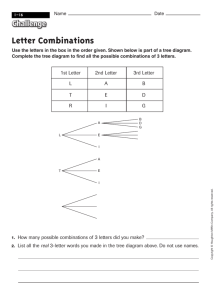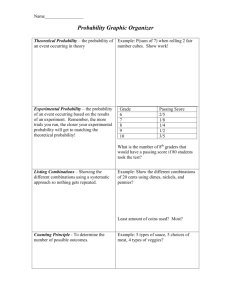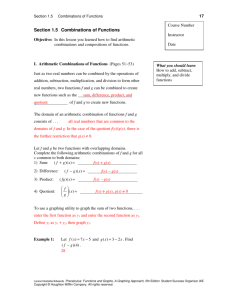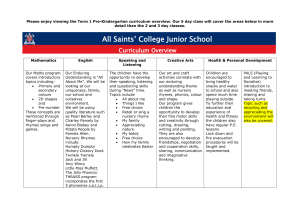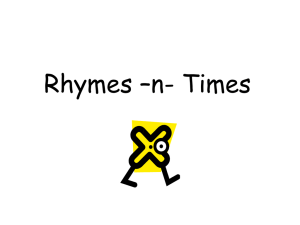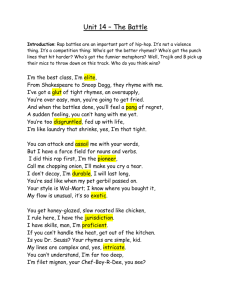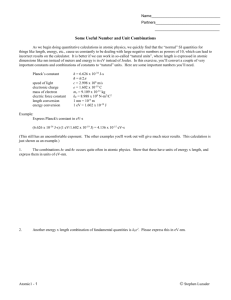Word Families/Letter Combinations
advertisement
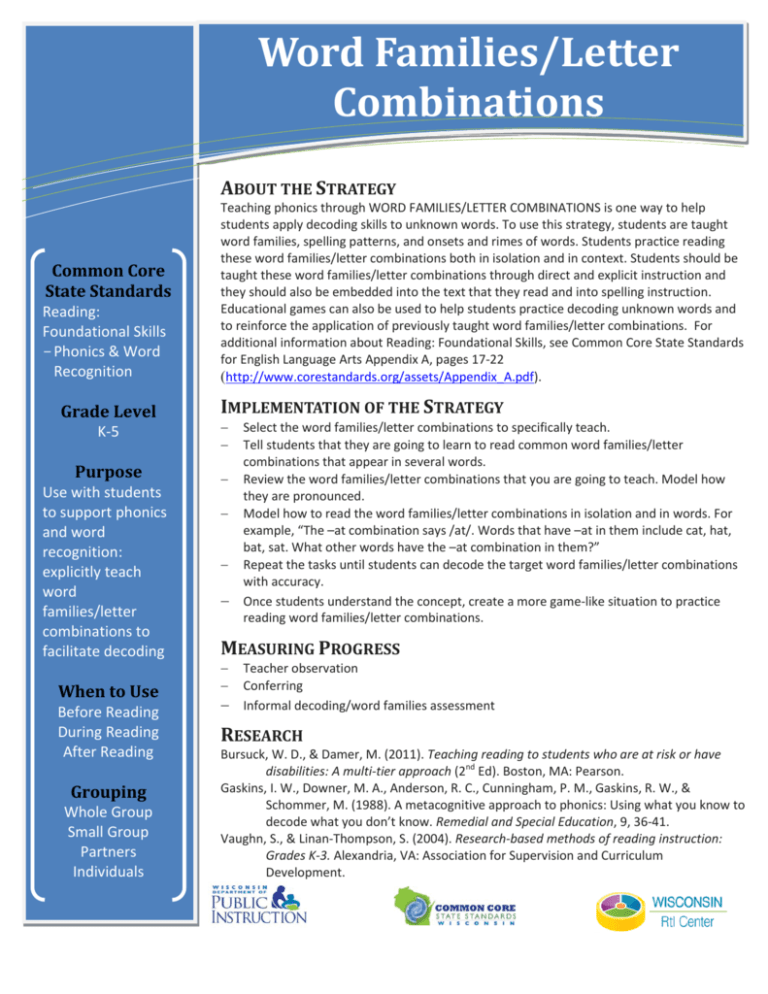
Word Families/Letter Information Technology Solutions Combinations ABOUT THE STRATEGY Common Core State Standards Reading: Foundational Skills adipiscing elit, sed - Phonics & diam Word nonummy nibh euismod Recognition tincidunt INTERNET SECURITY Sit amet, consec tetuer ut laoreet dolore magna aliquam. Grade Level K-5 NETWORK PROTECTION Ut wisi enim ad minim veniam, Purpose quis nostrud exerci tation Use with students dignissim qui blandit to support phonics praeseptatum zzril and word delenit augue duis dolore te feugait recognition: nulla adipiscingteach elit, sed diam explicitly nonummy word nibh. families/letter P E R S O N A L F I R Eto W ALLS combinations Tincidunt ut laoreet dolore facilitate decoding Teaching phonics through WORD FAMILIES/LETTER COMBINATIONS is one way to help students apply decoding skills to unknown words. To use this strategy, students are taught word families, spelling patterns, and onsets and rimes of words. Students practice reading these word families/letter combinations both in isolation and in context. Students should be taught these word families/letter combinations through direct and explicit instruction and they should also be embedded into the text that they read and into spelling instruction. Educational games can also be used to help students practice decoding unknown words and to reinforce the application of previously taught word families/letter combinations. For additional information about Reading: Foundational Skills, see Common Core State Standards for English Language Arts Appendix A, pages 17-22 (http://www.corestandards.org/assets/Appendix_A.pdf). IMPLEMENTATION OF THE STRATEGY ullamcorper.Et iusto odio magna aliquam erat volut pat. Ut When to Use wisi enim ad minim veniam, quis Before Reading lobortis nisl ut aliquip ex. During Reading After Reading exerci tation ullamcorper cipit Grouping Whole Group Small Group Partners Individuals Select the word families/letter combinations to specifically teach. Tell students that they are going to learn to read common word families/letter combinations that appear in several words. Review the word families/letter combinations that you are going to teach. Model how they are pronounced. Model how to read the word families/letter combinations in isolation and in words. For example, “The –at combination says /at/. Words that have –at in them include cat, hat, bat, sat. What other words have the –at combination in them?” Repeat the tasks until students can decode the target word families/letter combinations with accuracy. Once students understand the concept, create a more game-like situation to practice reading word families/letter combinations. MEASURING PROGRESS Teacher observation Conferring Informal decoding/word families assessment RESEARCH Bursuck, W. D., & Damer, M. (2011). Teaching reading to students who are at risk or have disabilities: A multi-tier approach (2nd Ed). Boston, MA: Pearson. Gaskins, I. W., Downer, M. A., Anderson, R. C., Cunningham, P. M., Gaskins, R. W., & Schommer, M. (1988). A metacognitive approach to phonics: Using what you know to decode what you don’t know. Remedial and Special Education, 9, 36-41. Vaughn, S., & Linan-Thompson, S. (2004). Research-based methods of reading instruction: Grades K-3. Alexandria, VA: Association for Supervision and Curriculum Development. Word Families/Letter Combinations List of common word families/letter combinations with example words to directly teach. ack attack back black all ball fall install ar far guitar scar eat beat meat wheat ent event scent vent ight bright knight slight ink drink mink stink oil broil foil spoil oof (rhymes with hoof) hoof woof oot (long oo) boot scoot schoot ought bought sought wrought add bad clad glad am dram exam slam ash flash mash thrash eel feel kneel wheel est best quest west ile mile smile while ip chip hip strip oke bloke poke stroke ook book crook took oot (short oo) foot soot ould could should would ail fail hail pail ame game name shame at gnat pat that eep keep sheep sweep ice dice slice twice ill dill mill thrill it knit quit split oo (rhymes with too) boo too zoo oom bloom gloom room op chop drop shop ouse house mouse spouse ain brain chain explain an fan man span ate crate debate plate eet feet sheet sweet ick brick quick slick in chin pin spin oat boat goat throat ood(rhymes with hood) good hood wood ool cool spool tool ore chore more swore out about scout trout ake awake bake flake ank bank drank prank aw claw jaw straw ell dwell sell smell ide bride slide wide ine fine shrine twine ock crock knock smock ood (rhymes with food) brood food mood oon moon noon spoon orn adorn corn thorn ow (rhymes with cow) chow plow vow ale bale male scale ap lap rap scrap ay away display play en hen open when ife knife life strife ing bring spring thing og log frog smog oof (rhymes with proof) proof roof spoof oop droop loop snoop ot forgot knot spot ow (rhymes with low) blow show throw own crown frown gown uck duck pluck truck ug bug mug smug ump dump plump thump un fun shun sun unk dunk plunk trunk Wylie, R. E., & Durrell, D. D. (1970). Teaching vowels through phonograms. Elementary English, 47, 787-791.
